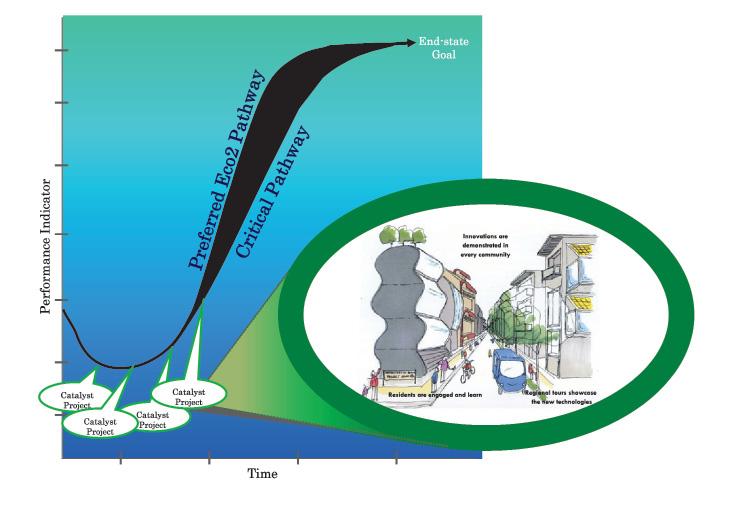
1 minute read
Figure 2.5 Catalyst Projects
Catalyst Projects Help Change Paradigms
“ Folks who do systems analysis have a great belief in ‘leverage points.’ These are places within a complex system (a corporation, an economy, a living body, a city, an ecosystem) where a small shift in one thing can produce big changes in everything. . . .
Advertisement
“ People who have managed to intervene in systems at the level of paradigm hit a leverage point that totally transforms systems.
“ . . . There’s nothing necessarily physical or expensive or even slow in the process of paradigm change. In a single individual it can happen in a millisecond. . . . Whole societies are another matter. They resist challenges to their paradigm harder than they resist anything else.”
Source: Meadows (1999: 1, 18). goal is to provide everyone with aff ordable housing and the actual price of housing is becoming less aff ordable every day, then some kind of intervention is clearly warranted. As long as the project details are not predetermined, the process of collaboration and integrated design, supported by new methods and tools, will lead to a more effi cient multipurpose system design and a more coordinated set of enabling policies.
Because of the focus on learning and integration, catalyst projects are not strictly pilot or demonstration projects. The emphasis is on learning and on catalyzing change by infl uencing all subsequent projects. The catalyst projects help transform a city into a learning society.
A city might plan for one active catalyst project in every neighborhood as a way to begin implementing the Eco2 pathway and as a contribution to local pride and place making. Figure 2.5 evokes a neighborhood catalyst project
Figure 2.5 Catalyst Projects
Source: Author elaboration (Sebastian Moffatt). Note: Catalyst projects are interventions in the short term designed to accelerate the changes needed to create an Eco2 pathway that will reach the targets and end-state goals of the long-term planning framework.





